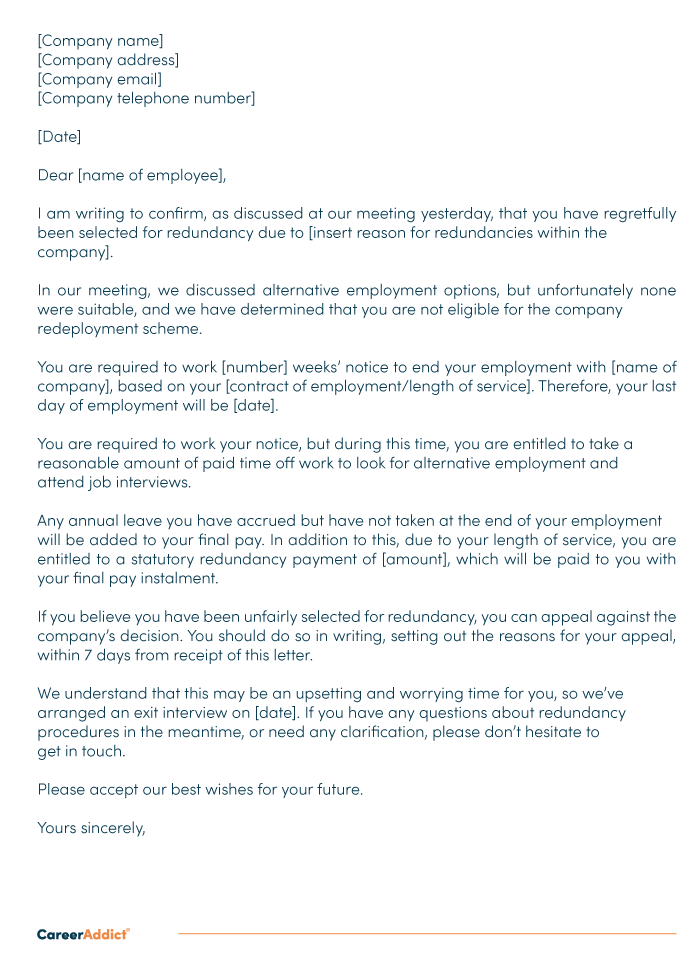Exploring the Interplay In Between Business Redundancy and Business Versatility for Future Growth
In the vibrant landscape of today's organization globe, the intricate connection between firm redundancy and organizational flexibility emerges as an important factor for continual development and success. Firms typically face the obstacle of striking a delicate balance in between maintaining a degree of redundancy to mitigate dangers and fostering flexibility to respond quickly to the ever-evolving market needs. This delicate interaction holds the key to not just surviving in unstable times but likewise thriving when faced with unpredictability. As we check out the complex dimensions of this interplay, interesting understandings right into exactly how companies browse these complexities to lead the way for future growth wait for.
Importance of Company Redundancy
Business redundancy is a critical component that enhances organizational resilience and reduces functional dangers. By including redundancy measures within the business structure, business can much better endure unanticipated interruptions and variations in the organization setting. Redundancy functions as a critical barrier, permitting firms to adjust and react effectively to unexpected obstacles without endangering crucial procedures.
One secret element of the significance of company redundancy is its function in making sure continuity during times of situation. When confronted with unexpected changes or emergency situations, repetitive systems, sources, or employees can step in to maintain crucial features and avoid extensive interruptions. This continuity not just safeguards the business's credibility and customer trust fund however also decreases economic losses and operational downtime.

Methods for Organizational Versatility

Creating adaptable organizational frameworks that permit for fast modifications to market characteristics and client needs is vital for staying competitive in a swiftly advancing setting. By proactively determining prospective disruptions and opportunities, companies can proactively thrive and adjust in an ever-changing service landscape.
Balancing Redundancy and Adaptability
Accomplishing a harmonious balance in between operational redundancy and business adaptability is vital in navigating the complexities of a dynamic organization atmosphere. Striking the right equilibrium between redundancy and versatility is a fragile procedure that calls for a deep understanding of the organization's goals, sector dynamics, and risk resistance.
To achieve this balance, firms require to perform regular assessments of their operations to identify areas where redundancy is required for danger mitigation and where versatility can drive advancement and development. dig this Carrying out flexible structures, fostering a culture of continuous learning and improvement, and encouraging open communication throughout all degrees of the company are crucial methods to integrate redundancy and flexibility properly. By straightening these 2 important components, business can position themselves for sustainable development and success in an ever-changing organization landscape.
Study on Adaptation Success
In taking a look at instances of successful organizational adjustment, it comes to be evident that the interplay between operational redundancy and versatility is a specifying variable in shaping resilient organizations. A DVD rental service, Netflix demonstrated remarkable versatility by transitioning into a streaming system when digitalization interfered with the sector. These instance studies underscore the importance of operational redundancy combined with organizational versatility in cultivating long-lasting development and competitiveness.
Building Resilience for Future Growth
Building resilience for future development requires a strategic positioning of operational processes with market characteristics and emerging fads. Business should adjust to altering environments by cultivating a culture of adaptability, technology, and constant renovation.
In addition, promoting strong connections with stakeholders, such as customers, staff members, providers, and the area, is necessary for preserving and weathering unpredictabilities count on and assistance throughout stormy times. Efficient interaction and transparency play a crucial role in building strength, as they help line up assumptions and help with partnership in navigating uncertainties.
Moreover, companies need to prioritize understanding and development efforts to upskill staff members and outfit them with the required tools to adapt to transforming circumstances. By investing in their labor force, firms can boost their adaptability and agility, eventually reinforcing their strength for lasting future growth.
Verdict

In the dynamic landscape of today's organization world, the detailed relationship in between company redundancy and business versatility emerges as a critical element for continual growth and success. Business often deal with the obstacle of striking a delicate equilibrium in between maintaining a level of redundancy to minimize dangers and fostering versatility to react promptly to the ever-evolving market demands.To accomplish this equilibrium, companies need to carry out normal assessments of their operations to determine locations where redundancy is necessary for danger reduction and where versatility can drive technology and development.In conclusion, the interplay between business redundancy and business adaptability is essential for future development. Structure strength via a combination of redundancy and adaptability will ensure that companies are prepared for the difficulties of the future.
Comments on “Your Rights to Redundancy If Company Goes Bust: UK Employee Protections”